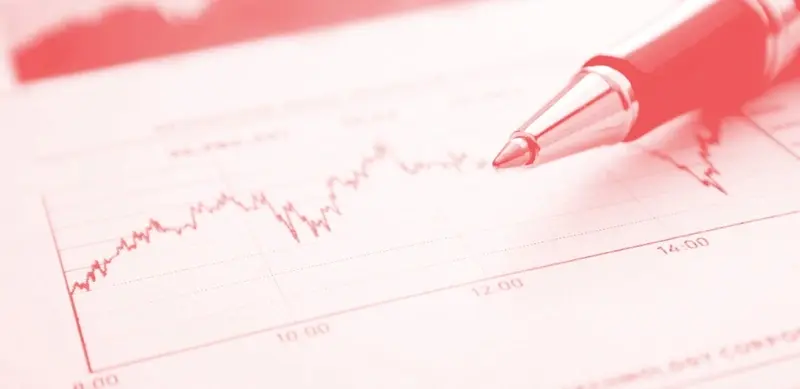
POINT AND FIGURE
Point and figure (P&F) charts use columns. Equal-sized crosses (X) represent an incremental price rise whilst a column of zeros (O) grows in length as an asset declines. Columns alternate between the two basic notations as the market rises and falls.
Characteristically the chart grows mostly in a vertical plane. New columns are initiated only when a sufficiently significant reversal in the previously dominant trend occurs. Boxes are added to the top of the column as prices rise by interval amounts and corrections that do not meet the minimum magnitude of the reversal criterion are ignored.
In the box seat
Besides the selected interval of price observation and whether or not just the closing price or the extremes are taken into account, there are only two key user definable variables to the system.
? The box size is the number of price points that each cross or zero represents. It is worth starting with a box size equivalent to 1% of the prevailing price and a box reversal of between one and three.
? The size of any noteworthy correction is represented by the number of adverse boxes that must be traversed before the current column completes and a new one started.
Ironically P&F charts are one of the few methods of traditional technical analysis with which computerised charting packages can struggle and using a font that is too small can render the X and O characters illegible. Often the best way to assess them remains to either manually plot or to print out and tape together the resulting sheets to see the big picture. Some programs do now use percentage change in price to at least determine the box size and this introduces an element of log scaling.
The P&F method means support and resistance levels, pennants, flags and triangles, as well as top and bottom patterns and price consolidations, are all easier to see. It is also possible to draw trend lines and although they always run at an angle of 45 degrees to the vertical any breaks through them can indicate a longer term multi-column influence is coming to an end.
When a significantly large move in one or other direction results in a long column of Xs or Os, a vertical count may be valid. This involves waiting for the next column to commence and then counting the number Xs or Os in the just-finished column and multiplying by the box size and the box reversal number. In the event of an uptrend this figure is then added to the start value of the column to obtain a price objective while it is subtracted in the event of a negative trend.
The P&F chart for the FTSE250 index begins in 1994. Levels of persistent support and resistance are evident whilst a triple-bottom takes shape as 2008 ends and 2009 starts. The vertical count from successive breakout columns of Xs seen during 2009 gives increasingly bullish vertical counts.
A 0.1% two-box reversal P&F chart for sterling/dollar shows persistent support and resistance features. An upward sloping triangle at this time in 2012 heralded the sharp rally to $1.6300 while a double-top pattern led into the steep declines of spring.





